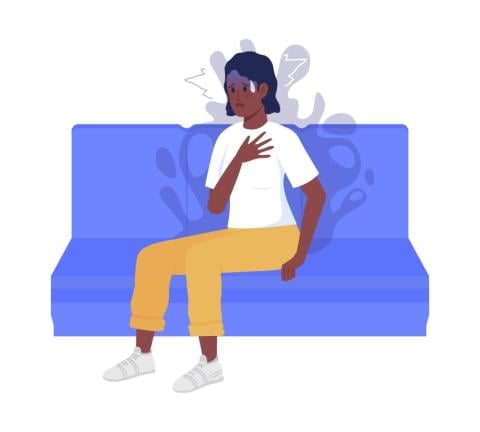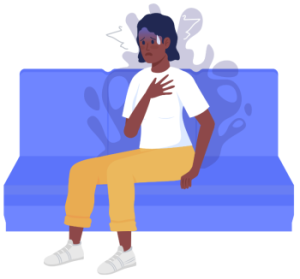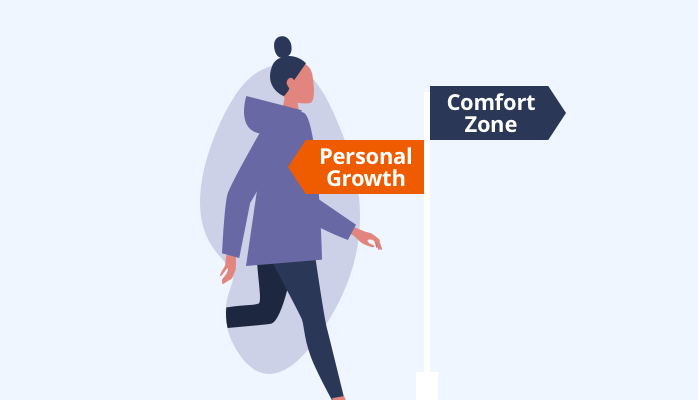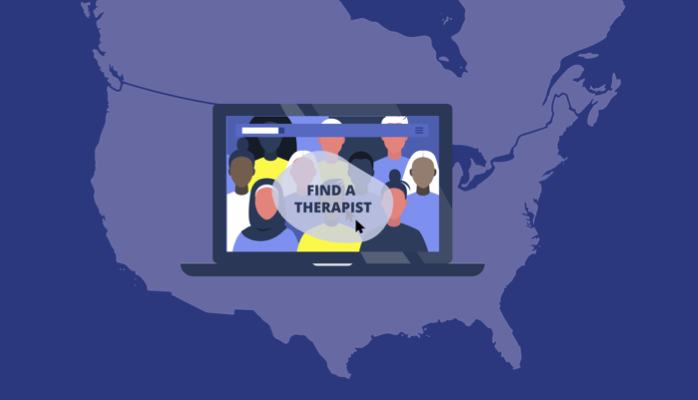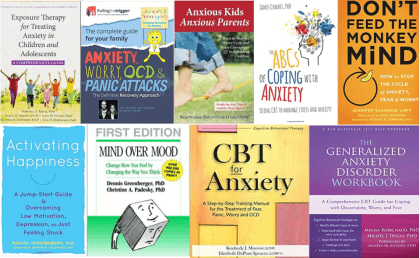Fibromyalgia is a common and complex chronic pain disorder that causes widespread pain and tenderness to touch that may occur body-wide or migrate over the body. Along with other symptoms, pain and tenderness wax and wane over time. Fibromyalgia affects people physically, mentally, and socially. (National Fibromyalgia & Chronic Pain Association, or NFMCPA)
About 20 percent who live with this chronic pain also suffer from an anxiety disorder or depression. Fibromyalgia and its connection to these illnesses should not be ignored.
Symptoms
Fibromyalgia is a medical condition that impairs the joints and causes chronic pain. Though the symptoms can feel similar to arthritis, it does not cause inflammation at the joints or muscles.
Fibromyalgia may cause people to experience sleep problems, headaches, and temperature sensitivity, as well as memory difficulties and numbness or tingling in arms and legs.
Research suggests that people with fibromyalgia are hypersensitive to stimuli that are not painful to others, perhaps due to a reduced blood flow to the portion of the brain that regulates pain. Fibromyalgia appears to run in families, but scientists haven’t pinpointed a specific gene.
Often misunderstood, fibromyalgia affects 3 to 6 million Americans — as many as one in 50. Women are significantly more likely to be diagnosed with the disorder, and most are diagnosed during middle age.
People with rheumatoid arthritis, lupus, and spinal arthritis are also more likely to develop fibromyalgia.
Diagnosis
A person must have widespread pain lasting for more than three months and at least 11 of 18 designated tender point sites on the body, as classified by the American College of Rheumatology (ACR).
But diagnosis can be difficult because not all doctors are familiar with the condition, and there is no lab test to detect it. Doctors must take the patient’s word about the amount of pain. Fibromyalgia is also difficult to diagnose because its symptoms of fatigue and disturbed sleep describe several medical conditions.
Treatment
The U.S. Food and Drug Administration has approved the first drug to treat fibromyalgia. But like other medical conditions, fibromyalgia often requires a combination of treatments and therapies, such as physical and occupational therapy and antidepressants, which in some cases can reduce pain in people who have fibromyalgia.
While symptoms can improve with treatment, fibromyalgia is a chronic condition that can last a lifetime. There is no cure, but the condition is not progressive or fatal.
Doctors also recommend getting ample sleep and exercise; even moderate exercise can make an immediate difference. A Harvard Medical School study discovered that women who engaged in strength training, aerobic activity, and flexibility training reported feeling better physically and mentally after four months.
Getting Help
Anyone suffering from chronic pain and an anxiety disorder should see a medical professional who can properly diagnose the conditions and develop a treatment plan.
That may mean seeing one doctor for fibromyalgia and another for an anxiety disorder. In this case, be sure to inform each physician about all the medications you’re taking, or ask that all your health professionals work together in your treatment.
Find a Therapist near you.
Find Out More
National Fibromyalgia & Chronic Pain Association (NFMCPA)
Fibromyalgia Network
American Fibromyalgia Syndrome Association
National Institute of Arthritis and Musculoskeletal and Skin Diseases
